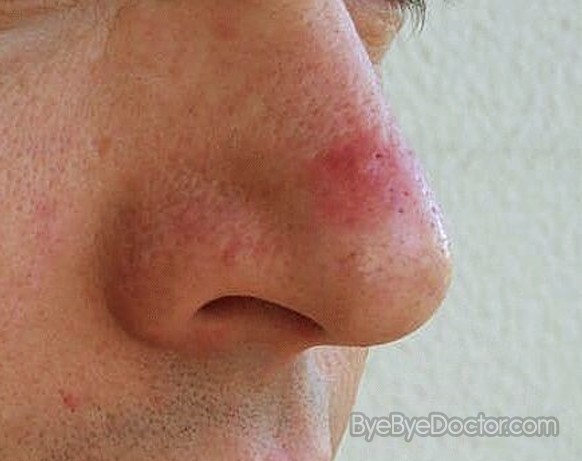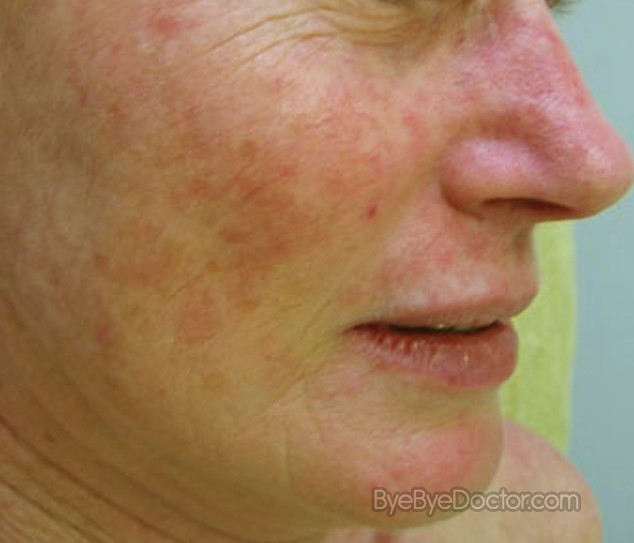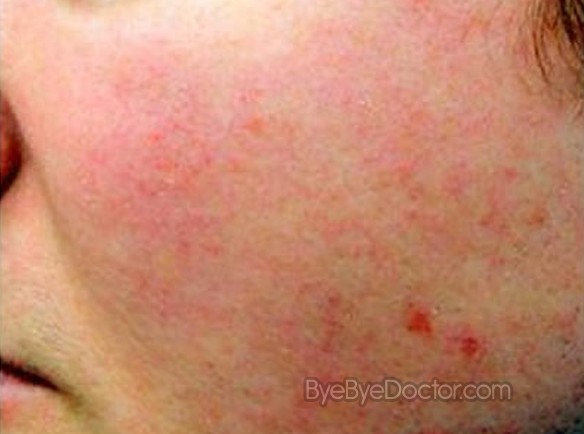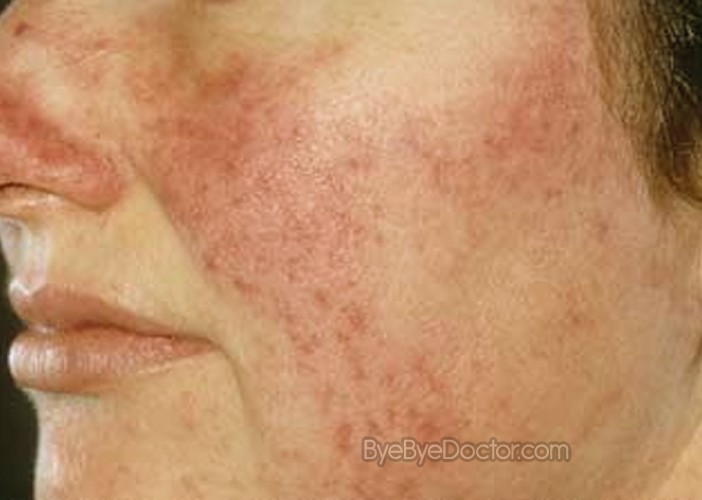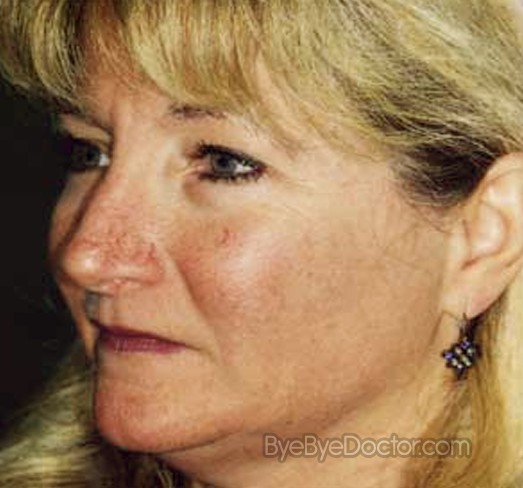Rosacea
Last reviewed by Dr.Mary on August 7th, 2018.
What is Rosacea?
This is a skin condition which is chronic and inflammatory and normally affects only adults. Rosacea causes redness in the face as well as producing red, small, pus-filled pustules or bumps.
If left not treated, rosacea typically becomes advanced meaning that it gets worse over time. But, in the majority of individuals, rosacea is recurring meaning that the symptoms come and go flaring up for a period of time and then fading. Not only can rosacea be mistaken for acne, there are other skin conditions which resemble it, such as eczema or skin allergy.
There is no cure for rosacea, but there are treatments which manage and reduce the symptoms and signs. If an individual experiences stubborn redness of the face, they need to see their physician for diagnosis as well as proper treatment.
Rosacea Symptoms
Individuals with rosacea may have:
- A flushed face with pimples or bumps on or around the nose, cheeks, forehead as well as mouth – often lasts for days.
- No whiteheads or blackheads
- Visible tiny red veins on the nose as well as the cheeks which resembles spider webs
- Burning or gritty stinging sensation on the skin of the face, especially when applying any lotions or medicines
- Face increasingly feels sensitive, dry or sunburned
- Red, dry, irritated eyes.
- Eyelids look swollen or red with vision being blurry. Not treated, rosacea can cause eye problems which are serious.
- Bulbous, red nose referred to as rhinophyma
- Inclination to blush or flush easily
With no treatment there are some cases of rosacea which cause bumps on the nose and cheeks which are knobby and that will multiply. This is known as advanced rosacea. Over time the nose becomes swollen with a waxy look.
Triggers, for instance sun exposure or alcohol, can stimulate increased blood flow, which causes the blood vessels to expand and the redness of the face appears. In women, this redness normally appears on the nose, chin, cheeks as well as the forehead. This redness can appear in a pattern of a butterfly across the nose and cheeks. In men, the facial redness normally appears on the nose, although there are symptoms which can appear on other parts of the face. Redness in some cases can even occur on the upper chest as well as the neck.
As mentioned above, there may also be eye irritation. Symptoms here include dryness, redness, burning, crusted mucus; gritty feeling as if sand is in the eye, tearing, pinkeye as well as swelling in the eyelid. The eyes will not be able to tolerate the wearing of contact lens and styes may possibly develop. These eye symptoms will appear in about half of the individuals with rosacea.
In some research it is suggested that there is a link between rosacea and migraine headaches. This would lead to the determination that perhaps blood vessels may be the link between these 2 conditions.
Rosacea normally develops in phases:
Pre-rosacea
Rosacea can begin simply as a tendency to blush or flush easily and to then progress to a tenacious redness in the central part of the face, especially the nose. The redness is caused by the dilation of blood vessels close to the skin’s surface.
Vascular rosacea
As the symptoms and signs grow worse, vascular rosacea can develop – small blood vessels on the cheeks as well as the nose swell and can become visible. The skin can become very overly sensitive. Accompanying this phase can also be dandruff as well as oily skin.
Inflammatory rosacea
Red, small pustules or bumps can appear as well as persist, and will spread across the cheeks, nose, forehead and chin.
Additionally about 1 in 2 individuals with rosacea will also experience ocular rosacea – the symptoms in the eyes are mentioned above.
Rosacea Causes
An actual cause of rosacea is not known but most medical researchers believe it is probably due to some combinations of environmental factors and genetics. Many professionals believe that rosacea is possibly a vascular disorder since there is the association with flushing, redness as well as visible blood vessels. Some physicians have speculated that flushing perhaps involves the nervous system, especially since it is most often triggered when the individual is under some type of emotional stress.
Another theory is that the swelling is caused by the increased blood flow during flushing which leads to an increase in fluid in the tissue and which collects faster than the lymphatic system can eliminate it. This swelling in turn can cause the skin thickening as tissue amasses.
There are a number of causes which seem to heighten or trigger rosacea or which make it worse by the increasing of blood flow to the surface of the skin of the face. Some of these factors are:
- Spicy food
- Hot beverages as well as foods
- Temperature extremes
- Alcohol
- Sunlight
- Anger, stress or embarrassment
- Exercise which is strenuous
- Saunas or hot baths
- Corticosteroids
- Medications which dilate blood vessels, including some medications for blood pressure
One thing needs to be understood – alcohol does not cause rosacea. While drinking alcohol can cause the flushing of the skin and also can worsen rosacea, people who do not drink alcohol can also get rosacea. Risk factors for rosacea include:
- Fair skin
- English, Irish or Scottish heredity
- Ease in blushing
- Family members with rosacea
- Female gender
- Menopause
- Being 30-50 years of age
In rare and very severe cases, the sebaceous glands or oil glands in the nose and often in the cheeks can become enlarged, causing a buildup of tissue around and on the nose. This is a complication normally seen in males and slowly develops over a period of years.
Rosacea Treatment
Currently there is not a definite test for rosacea. But, physicians rely on the history of symptoms, a physical exam of the skin and also eliminating other condition such as acne, for which rosacea may be mistaken.
There is no way to eradicate rosacea, but there is effective treatment which can get rid of the symptoms. Most often this really needs a blend of drug treatments and some changes in lifestyle changes.
The physician may mention definite cleansers, moisturizers, sunscreens as well as other products which improve the skin. If one trigger of rosacea is hot flashes, the individual can speak with their physician on treatments which are available for the symptoms or signs of menopause.
Medications
An individual with rosacea may need to have a combination of prescription-strength lotions, creams or gels and also oral medications to treat this condition.
Topical Medications
These medications are applied to the skin once or twice daily and may help to reduce redness and inflammation. They can also be used along with oral medications or as part of a management program to control symptoms.
Topical Antibiotics
Topical antibiotics such as Metrocream, Metrogel, Atralin, Renova, Azelex, Finacea. These medications do have side effect such as skin irritation, dry skin, redness and burning or stinging of the skin.
Oral Antibiotics
Physicians may prescribe oral antibiotics to treat rosacea more because of their inflammatory properties than to actually kill germs. These oral antibiotics are also used because they tend to work faster than topical ones. Possible side effects include diarrhea, stomach discomfort, vomiting or nausea as well as sore mouth or tongue.
Isotretinoin such as Amnesteen and Accutane
Isotretinoin such as Amnesteen and Accutane is another very powerful medication which is oral and used for severe cases of inflammatory rosacea when other treatment options fail to improve the symptoms. Normally prescribed for cystic acne, isotretinoin works to inhibit production of oil by the sebaceous glands. These individuals need to be monitored closely by a dermatologist because of possible serious side effects, including suicidal thoughts, depression, joint or bone pain, as well as skin rash and infections. This medication causes birth defects when taken during pregnancy.
The duration of treatment depends on the severity as well as the type, but normally you will notice an improvement within 1 to 2 months. Symptoms can recur when the medication is stopped and longer term treatment may be necessary.


